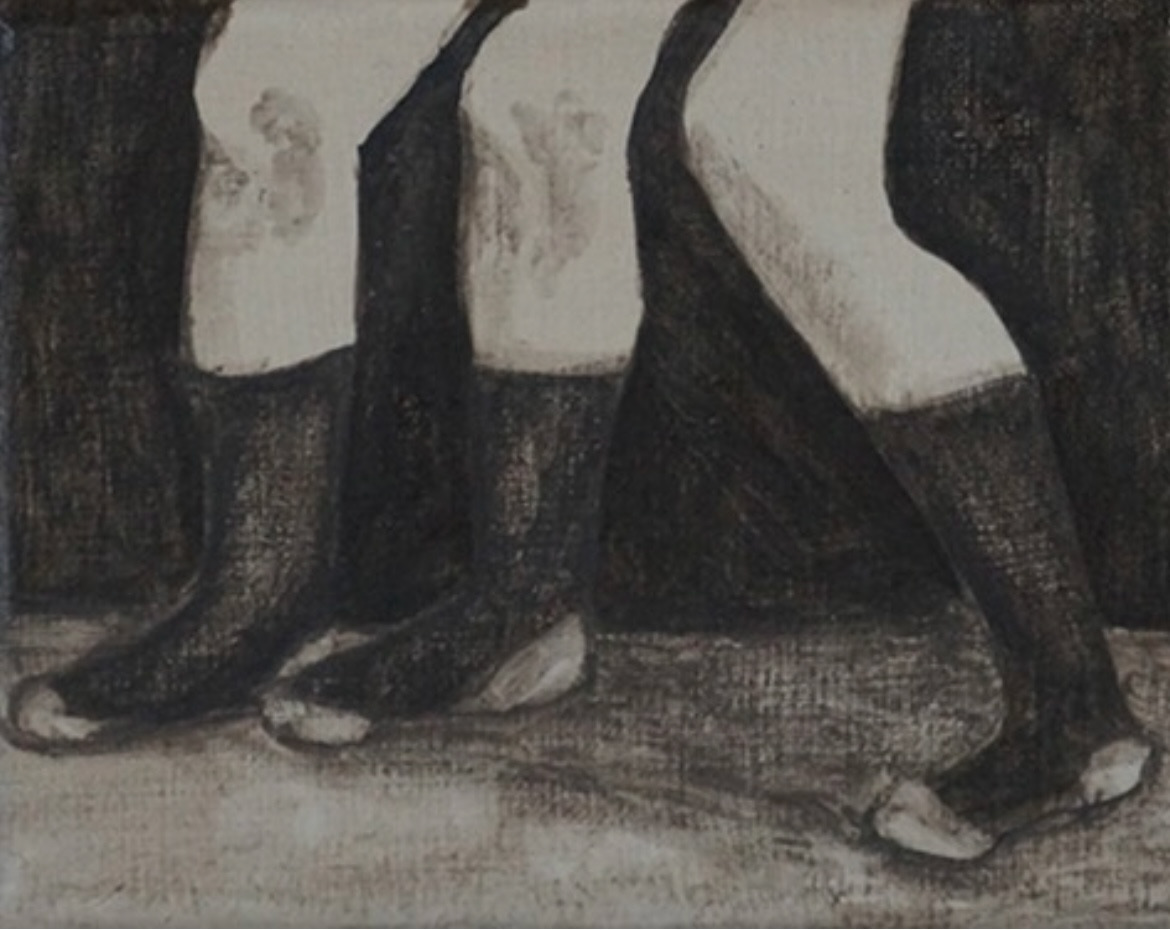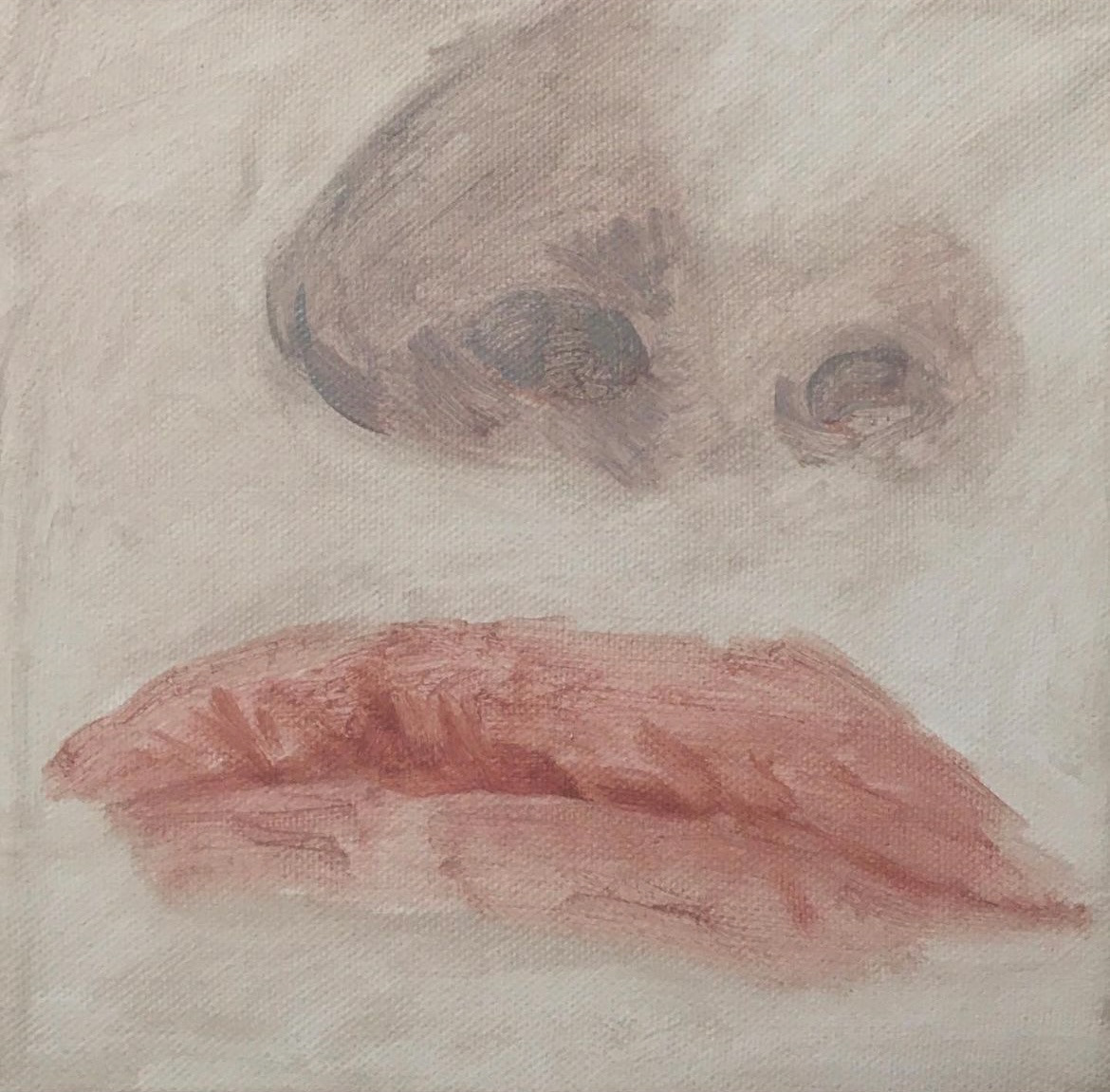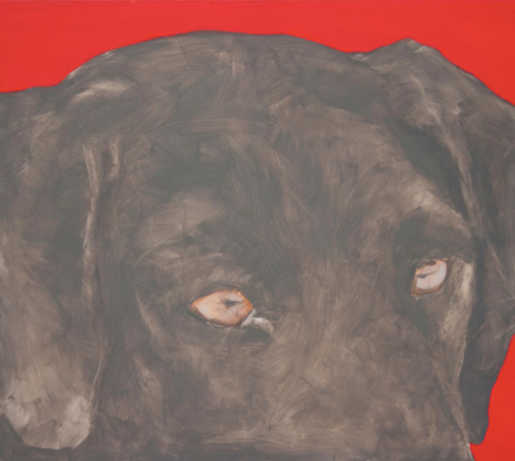A travers son travail figuratif, Monika Chlebek cherche l’essentiel, marquée par des détails chez ses sujets. Tous issus du réels, ils se succèdent par des cadrages resserrés et des compositions épurées. Peintures de fragments, ses oeuvres sont centrées sur la représentation de chiens, d'objets ou d'éléments du corps ne nous donnant accès qu’à une partie d’une scène qu’on imagine bien plus grande, préservant en quelque sorte son lien avec eux.
Monika Chlebek est une peintre polonaise, diplômée de la Fine Art Academy of Kraków en 2011 en peinture. L'artiste a beaucoup exposé dans toute la Pologne, ainsi qu'une exposition personnelle au Japon et des expositions collectives en Allemagne, en Autriche, en Hongrie et en Italie. Monika Chlebek présentera bientôt deux expositions personnelles en Pologne. A l'occasion de l'exposition collective Part of me, 4 toiles inédites de la peintre, seront présentées. Cela sera la première fois que l'artiste exposera en France. C'est à cette occasion que je me suis entretenue avec la peintre.
Can you introduce yourself ?
I was born in Cracow, where I graduated from the Academy of Fine Arts in 2011. Before that, I attended the High School of Fine Arts, and even then I was most interested in painting out of all the fields of art.
I like everything related to it, from preparing stretchers, mixing paint, searching for ideas, ending with the realisation of the painting itself. Sometimes I feel that an extension of my hand is a paintbrush :).
Je suis née à Cracovie, où j'ai obtenu mon diplôme de l'Academy of Fine Arts . Avant cela, j'ai fréquenté High School of Fine Arts, et déjà à l'époque, c'est la peinture qui m'intéressait le plus parmi tous les domaines de l'art.
J'aime tout ce qui s'y rapporte, depuis la préparation des châssis, le mélange de la peinture, la recherche d'idées, jusqu'à la réalisation de la peinture elle-même. Parfois, j'ai l'impression qu'une extension de ma main est un pinceau :).

„Goodnight moon” 2021, oil on canvas, 120x110 cm

„Half a dog” , 2021, oil/canvas, 115x120 cm
" In the classical approach, the portrait does not appear in my work. It is rather a close-up, a fragment of a figure. I focus on the detail, which literally brings us closer to the portrayed person, at the same time it does not allow us to know the whole. "
Monika Chlebek
You realize a certain number of portraits of dogs by varying the points of view. Can you tell us about this work and its origin?
I started to paint dogs more often the moment my female dog Kola came into my life, which I was taking to the studio. It was pandemic time, so we spent a lot of time together. I looked at her with a look that simply seduced me. I saw something in it that I necessarily wanted to paint. It's hard for me to explain, it's some kind of depth, understanding. I'm interested in portraiture, with all my attention focused precisely on the gaze.
J'ai commencé à peindre des chiens plus souvent au moment où ma chienne Kola est entrée dans ma vie, que j'emmenais au studio. C'était la période de la pandémie, nous avons donc passé beaucoup de temps ensemble. Je l'ai regardée avec un regard qui m'a tout simplement séduit. J'y ai vu quelque chose que j'avais forcément envie de peindre. C'est difficile pour moi d'expliquer, c'est une sorte de profondeur, de compréhension. Je m'intéresse au portrait, avec toute mon attention concentrée précisément sur le regard.
You also represent different parts of the female human body. What interests you in the representation of these body motifs?
I'm interested in their fragmentary nature. Understatement.
In the painting "Clenched Teeth" we see something like a smile, teeth grinning. We can't see the eyes by which we could identify what the emotion is. It is an image of unexpressed anger, of smiling through clenched teeth. The image of the upturned back is a play on abstraction and figurativeness, and on the level of meaning it triggers an association with absence.
Je m'intéresse à leur nature fragmentaire. La sous-estimation.
Dans le tableau "Dents serrées", on voit quelque chose comme un sourire, des dents qui grincent. Nous ne voyons pas les yeux qui nous permettraient d'identifier l'émotion. C'est une image de colère inexprimée, de sourire à travers des dents serrées. L'image du dos tourné est un jeu sur l'abstraction et la figurativité, et au niveau du sens, elle déclenche une association avec l'absence.

I could see that you were proposing compositions where you placed side by side small formats of dog portraits and body motifs. Can you tell us a few words about them?
The juxtaposition of different motifs is a puzzle from which connections that surprise me arise. Sometimes they complement each other, and sometimes they are opposites.
La juxtaposition de différents motifs est un puzzle d'où surgissent des connexions qui me surprennent. Parfois, ils se complètent, parfois ils s'opposent.
You decline these motifs on small and large formats. What is your usual creative process?
I try different motifs on different formats. Even if the representation is similar it is the change in format that causes a change in perception.
I don't have a rule. Sometimes I start with small formats and if I'm intrigued by how a motif will look on a large format then I check, often I paint a large format and don't necessarily switch to a smaller format. Most often, however, the painting is preceded by a small sketch of colour and composition. This is especially true for large formats. I also look for solutions on paper, usually oil or gouache.
J'essaie différents motifs sur différents formats. Même si la représentation est similaire, c'est le changement de format qui provoque un changement de perception.
Je n'ai pas de règle. Parfois, je commence par des petits formats et si je suis intrigué par l'aspect d'un motif sur un grand format, je vérifie. Souvent, je peins un grand format et ne passe pas nécessairement à un format plus petit. Le plus souvent, cependant, le tableau est précédé d'une petite esquisse de couleur et de composition. C'est particulièrement vrai pour les grands formats. Je recherche également des solutions sur papier, généralement à l'huile ou à la gouache.
How do you interpret the genre of portraiture in your work? What will you present in January for the group show that questions it?
In the classical approach, the portrait rather does not appear in my work. It is rather a close-up, a fragment of a figure. I focus on the detail, which literally brings us closer to the portrayed person, at the same time it does not allow us to know the whole.
In January, I will show four small paintings that depict such a portrait shot. In close-up.
Dans l'approche classique, le portrait n'apparaît plutôt pas dans mon travail. Il s'agit plutôt d'un gros plan, d'un fragment de figure. Je me concentre sur le détail, qui nous rapproche littéralement de la personne représentée, en même temps qu'il ne nous permet pas de connaître l'ensemble.
En janvier, j'exposerai quatre petites peintures qui représentent un tel cliché de portrait. En gros plan.

„Clenched teeth” , 2021, oil on canvas, 130x105 cm

„Is watching” , 2020, oil on canvas, 51x55 cm

Still stand „Puzzling” , 2015, oil on canvas, 10x13 cm

Untitled, 2016, oil on canvas, 20x20 cm
